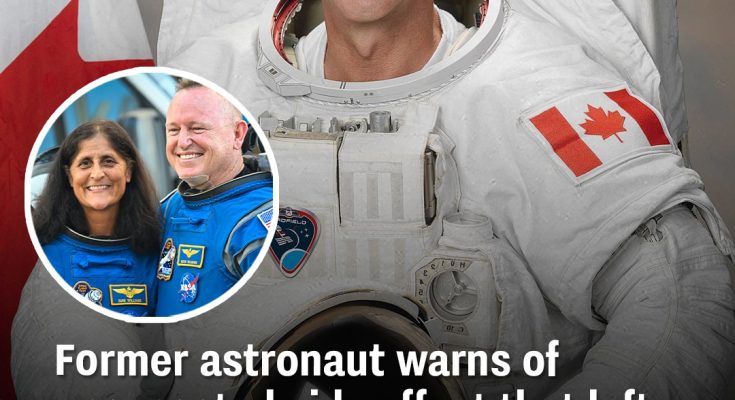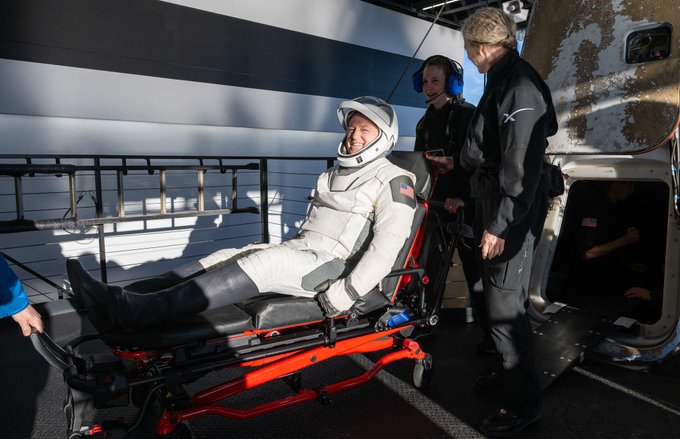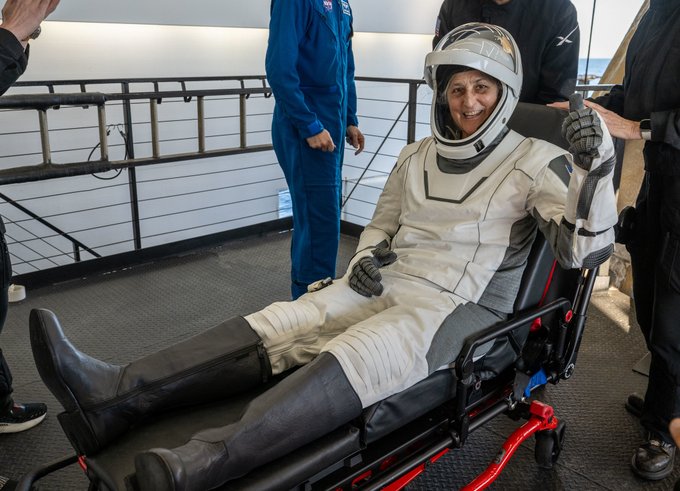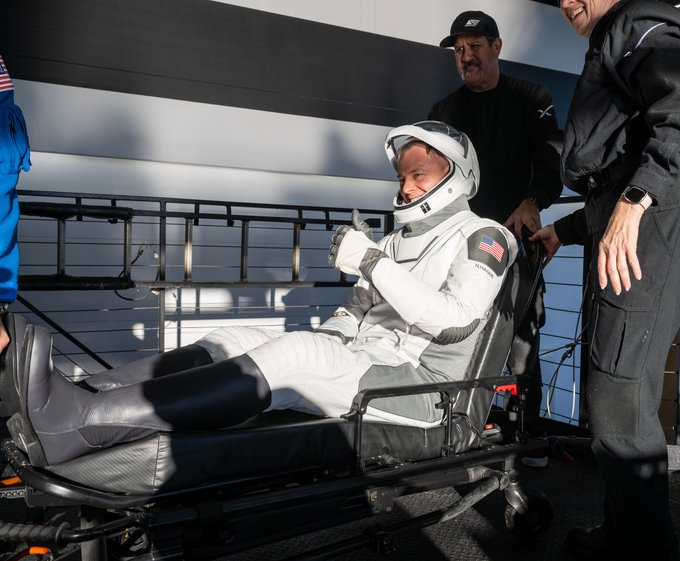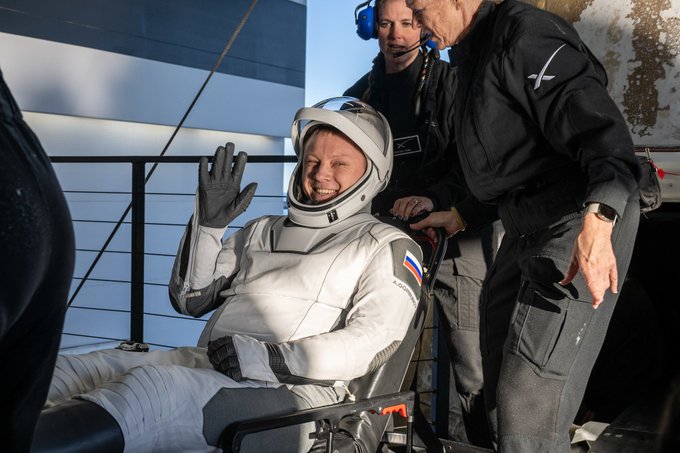The story of Suni Williams and Butch Wilmore is only just beginning, and while the pair have insisted they weren’t ‘stranded’ in space for 286 days, it’s become an easy headline after their Boeing Starliner malfunctioned and flew back without them in September 2024.
The pair have been caught in the middle of a media storm ever since President Donald Trump called for Elon Musk to ‘go get’ them, while the latter claimed they’d been used as political pawns by the Biden administration.
NASA moved its launch schedule forward, and on March 16, 2025, four Crew-10 astronauts arrived on the International Space Station to take over from Williams, Wilmore, Nick Hague and Aleksandr Gorbunov. The Crew-9 Dragon spacecraft made a successful splashdown on March 18, but before Williams and Wilmore could even get a word out, they were quickly rushed off on stretchers.
We’ve already been told this is standard protocol for any extended time in space, with all four being whisked away for medical examinations.
Still, with people being concerned about the health of Williams in particular for months, the supposed ‘brutal’ recovery regime they’re about to be thrust into could take even more of a toll on their bodies.
Standard side effects from being in space for such a long time include loss of muscle mass and bone density, possible changes to your eyesight, and even a potential increase in cancer scares due to being bombarded by so much cosmic radiation.
However, according to former Canadian astronaut Chris Hadfield, one unexpected side effect could change the way you talk.
Previously discussing his 146 days aboard the ISS in 2013, Hadfield said: “Right after I landed, I could feel the weight of my lips and tongue and I had to change how I was talking. I hadn’t realised that I learned to talk with a weightless tongue.”
This prompted the University of British Columbia to conduct research into how gravity affects speech, with Department of Linguistics professor Bryan Gick and doctoral student Arian Shamei noting how vowels produced by astronauts change following a stint in space.
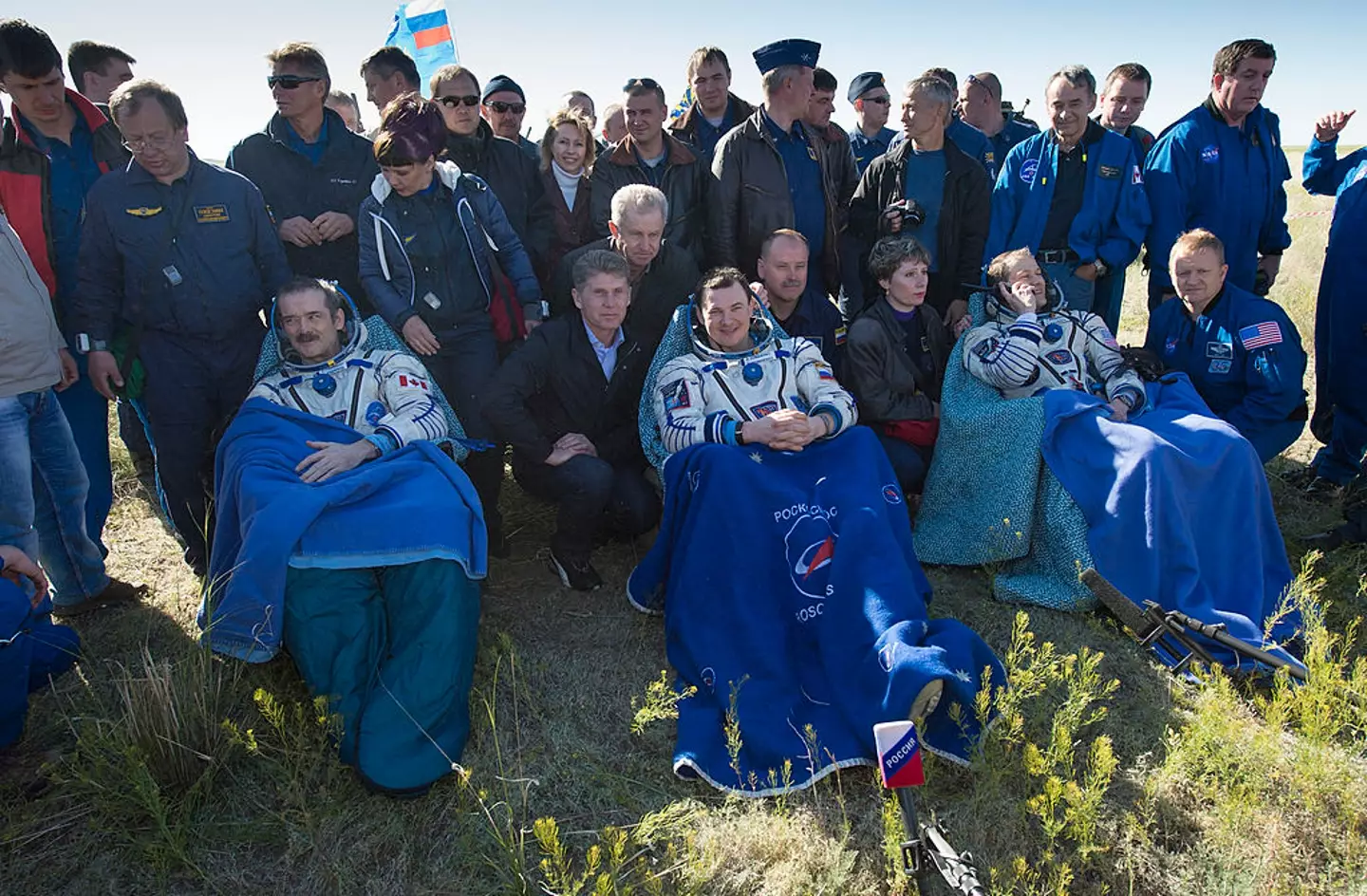

Hadfield returned from 146 days in space in 2013 (NASA / Handout / Getty)
Shamei explained: “We found that all vowels were lowered and centralized for post-flight conditions, meaning astronauts speak as if their tongues are effectively heavier upon return from space.
“Speech sounds requiring upward movements of the tongue were particularly impaired, as these movements are more affected by the force of gravity.”
While Williams and Wilmore had to undertake the standard exercise of up to two hours a day when onboard the ISS, Gick suggested that NASA should look at implementing exercises for the tongue: “The next steps would be to outline for the agencies a range of follow-up studies of speech perception and production and other fine motor control under varying gravitational conditions.”
It’s not just their tongues that could do with a workout, as Hadfield also said his feet had lost all cushioning on his feet: “I was walking around like I was walking on hot coals.” This fits with warnings that Williams and Wilmore will have so-called ‘baby feet’ skin upon their return.
There’s a lot for Williams and Wilmore to look forward to now they’re back on Earth, but in terms of their recovery, it’s not something we envy.
Featured Image Credit: NASA


Spending months in space might sound like the ultimate adventure, but for NASA astronaut Sunita Williams, the experience came with an unexpected emotional toll.
Williams, who was only supposed to be on an eight-day mission, has now been in space for over 270 days after a series of technical failures left her and fellow astronaut Butch Wilmore stranded on the International Space Station (ISS).
Responding to a press question from the ISS on as part of a pre-departure news conference, from 6:06 in the video above: Williams revealed: “the hardest part of being stuck in space wasn’t the weightlessness or the isolation — it was the uncertainty of when she’d be able to come home”.
“The hardest part is having the folks on the ground not know exactly when we’re coming back. It’s been a rollercoaster for them – probably more so than for us,” she added.
Williams and Wilmore launched aboard Boeing’s Starliner on June 5, 2024, for what was supposed to be a quick trip to the ISS. But things quickly went south when the spacecraft experienced multiple technical failures.
NASA later deemed it too unsafe to bring them back, forcing the astronauts to stay aboard the station while alternative plans were made. Starliner was eventually sent back to Earth without them in September, leaving them quite literally without a ride home.
Now, after months of uncertainty, NASA has confirmed that the two astronauts will finally return to Earth on March 19 or 20. But instead of Boeing bringing them back, they’ll be catching a lift with Elon Musk’s SpaceX on the Crew-9 return flight.
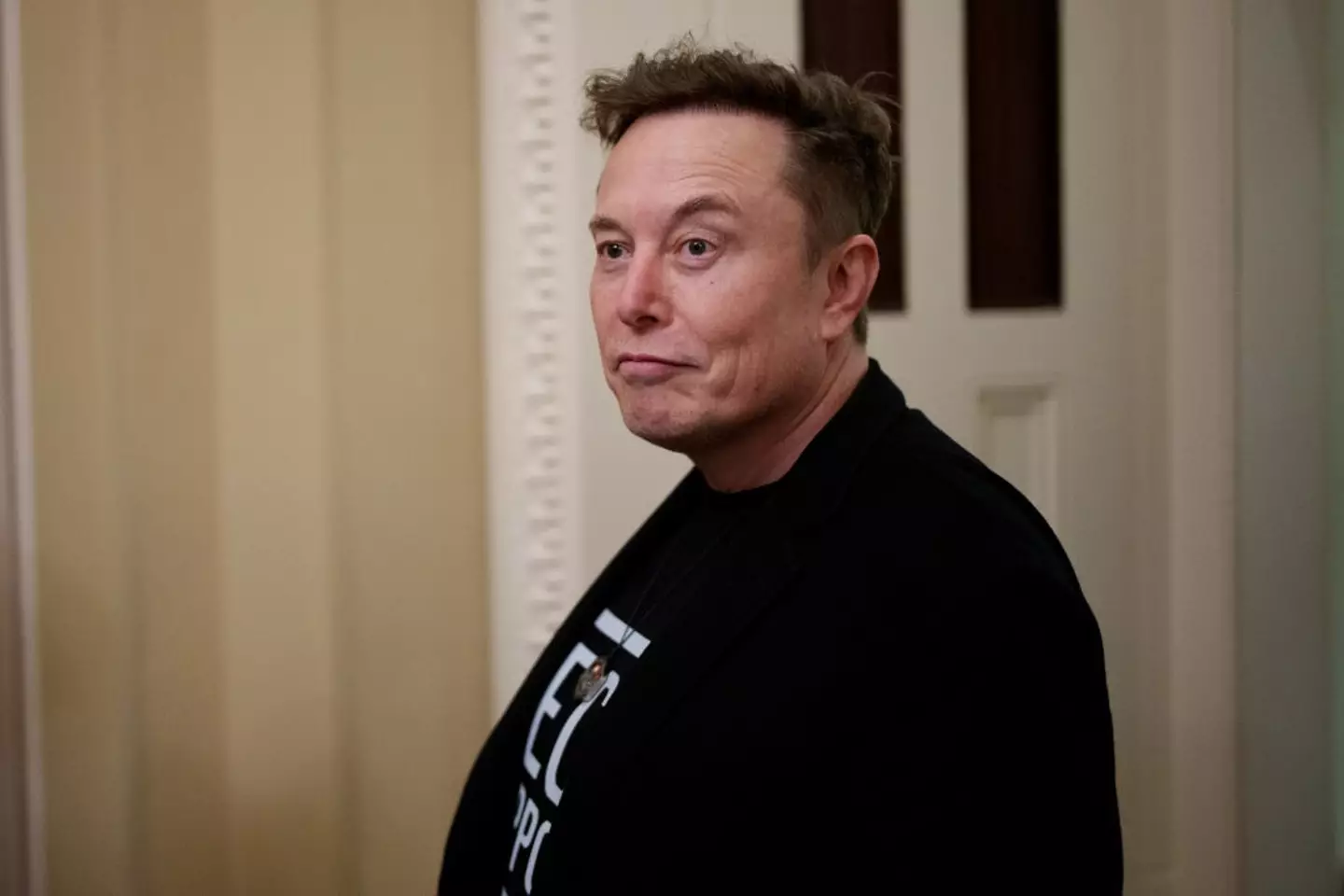

SpaceX & Tesla CEO, Elon Musk (Getty Images)
The extended stay has sparked major controversy back on Earth, with Elon Musk suggesting that the delay was politically motivated. Former US President Donald Trump echoed the claims, accusing the Biden administration of deliberately holding them in space longer than necessary.
Despite the swirling speculation, Williams and Wilmore have largely avoided getting dragged into the politics of it all. When asked about the controversy, Williams simply responded, “We know what we’ve lived up here. We have the utmost respect for everyone trying to get us home.”
Wilmore, however, admitted that he and Williams have been kept in the dark regarding the politics of their situation. Referring to Musk’s claim, he said: “That’s information that we simply don’t have, so I believe him”.
For now, the focus remains on getting the astronauts back safely. After spending nearly a year in space, their long-awaited return is finally in sight.
Featured Image Credit: Joe Raedle / Staff / Getty


The space saga of Suni Williams and Butch Wilmore is finally coming to an end.
While the former has insisted the pair of NASA astronauts aren’t stranded aboard the International Space Station, the fact their eight-day mission has turned into a 278-day one (and counting) has us all feeling for them.
Capturing the attention of the world and even being used as political pawns by Donald Trump and Elon Musk, the dynamic duo has barely been out of the news since their Boeing Crew Flight Test starliner malfunctioned and had to be sent back to Earth without them.
The POTUS had called on Musk to go and ‘rescue’ Williams and Wilmore, but finally, NASA has confirmed the date they should be back on Earth.
Although the pair will have to go through a brutal regime of rehab, we’re sure they’ll be more than happy to have finally left the confines of the ISS.
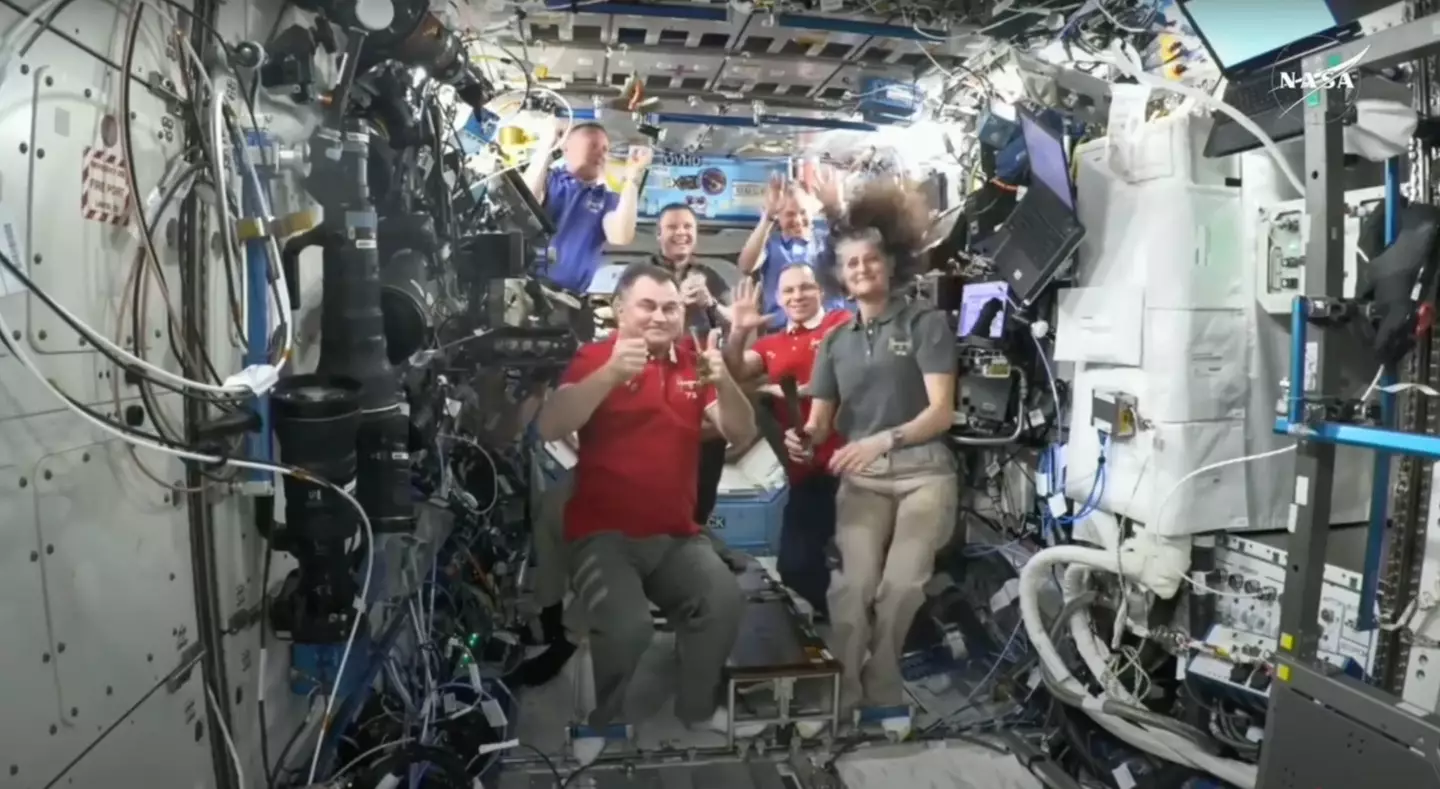

Williams and Wilmore will soon be back on Earth (NASA)
As reported by Space.com, NASA has cleared the Crew-10 relief crew that will launch inside the SpaceX Dragon on March 12.
NASA officials say that Williams and Wilmore should return to Earth on March 16, by which point, they’ll have been in space for 283 days.
While the empty Starliner headed back in September 2024, NASA astronaut Nick Hague and Roscosmos cosmonaut Aleksandr Gorbunov flew as part of the SpaceX Crew-9 mission with two empty seasons on their Dragon for Williams and Wilmore. All four will fly back once the relief crew reaches the ISS.
ISS program manager Dana Weigel explained: “When we looked at the situation at the time, we had a Crew-9 launch in front of us. It made sense to take the opportunity to bring Crew-9 up with just two seats and have Butch and Suni fill in, and do the rest of the long-duration mission.
Crew-10 will take off from Florida’s Kennedy Space Center for a mission expected to last six months.
This crew is commanded and piloted by NASA astronauts Anne McClain and Nichole Ayers, who are joined by mission specialists JAXA astronaut Takuya Onishi and Roscosmos cosmonaut Kirill Peskov.
These four were due to fly on SpaceX’s brand-new Dragon, but with pressure mounting to bring back Williams and Wilmore, they’re now flying on the veteran Endurance capsule that’s already been to the ISS and back three times.
Despite pressure from Trump, NASA’s Commercial Crew Program manager Steve Stitch said it’s typical for missions to face delays: “We’re always looking and refining the manifest. We started looking at that schedule, and at that time, early this year, late January, that’s when we finally decided we’ll move to [Endurance].”
Endurance and Crew-10 are due to launch at 7:48 p.m. EDT on March 12 and reach the ISS about 14 hours later.
While Williams and Wilmore’s stay is still a way off the 437 days that Russian cosmonaut Valeri Polyakov spent aboard the Mir Space Station in 1994 and 1995, they’ll undoubtedly be glad to be back with their loved ones.
Featured Image Credit: MIGUEL J. RODRIGUEZ CARRILLO / Contributor / Getty


Although Sunita Williams and Butch Wilmore were only supposed to go on a quick jaunt to the International Space Station in June 2024, their return mission was scuppered due to issues with their Boeing Starliner. This left them up in space for nine months.
Williams might insist that the pair haven’t been ‘stranded’ in space, but that hasn’t stopped the media coining the idea and President Donald Trump using their story to promote Elon Musk’s SpaceX.
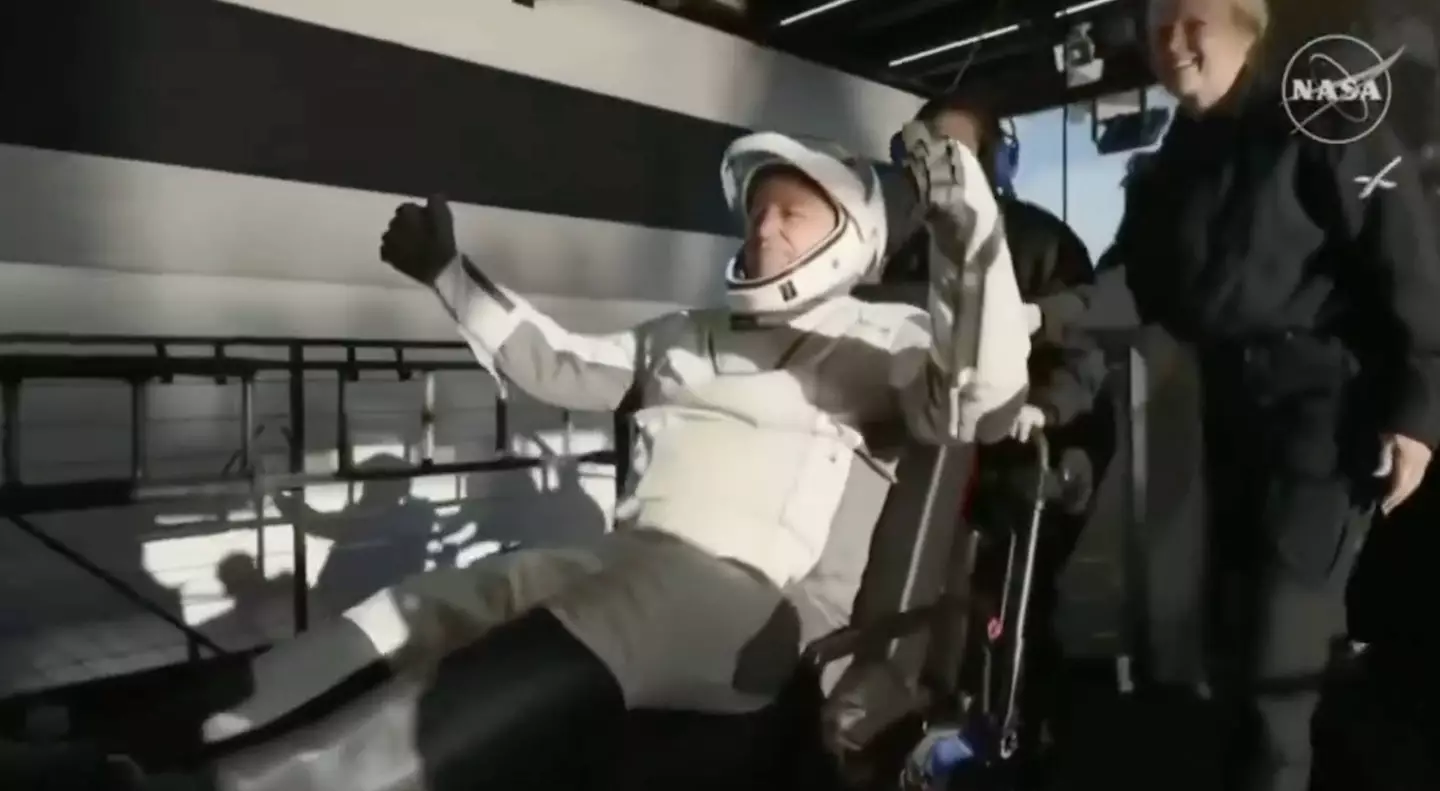

Wilmore was happy to be back on Earth (NASA)
The tech billionaire claimed that the Biden administration ‘abandoned’ Williams and Wilmore up there, but now, they’re finally back on terra firma.
Despite a March 12 launch for the Crew-10 relief crew being aborted at the last minute due to issues with the hydraulic system, and a second attempt called off due to bad weather, it was third time lucky as a March 16 mission led to emotional scenes where those aboard the ISS met with the Crew-10 astronauts.
After a brief handover, a NASA livestream confirmed Williams and Wilmore left the ISS at 1:05 a.m. EST on March 18, meaning they were scheduled to make a splash off the coast of Florida at around 5:57 p.m. EST. (21:57 GMT).
Even though we were told that the astronauts would be immediately rushed off via stretcher to undergo a ‘brutal’ recovery regime due to their unexpectedly long stay in space, we had to be reminded that the pair would be quickly carried away. At least there were plenty of smiles as they went to be checked over. In the aftermath, the White House wasted no time in sharing its thanks for the POTUS.
Posting on X, the official account wrote: “PROMISE MADE, PROMISE KEPT: President Trump pledged to rescue the astronauts stranded in space for nine months. Today, they safely splashed down in the Gulf of America, thanks to @ElonMusk , @SpaceX , and @NASA !”
These sentiments were then shared by Musk, who retweeted the post.
Williams and Wilmore had already thanked Musk and Trump for their help in getting them home, and it’s clear the White House has similar praise for the Commander-in-Chief.
Featured Image Credit: NASA


NASA may be under major threat as President Trump reportedly considers slashing 50 percent of the US space agency’s budget.
Budget cuts across federal agencies have been widespread since tech billionaire Elon Musk took charge of the Department for Government Efficiency (DOGE), as part of its promise slash up to $2,000,000,000,000 in federal spending.
The Associated Press estimates that hundreds of thousands of federal workers have already been impacted by reductions in departments like Veterans Affairs, Defense, Health, and Human Services.
Just weeks ago, layoffs hit the Center for Disease Control and Prevention (CDC), only for 180 former employees to receive an unexpected email asking them to return to work days later.
Now, over 1,000 NASA employees could be next in line, which could spell disaster for US space agency’s future.
According to Ars Technica’s Eric Berger, Trump’s administration is expected to slash NASA’s budget by as much as 50 percent.

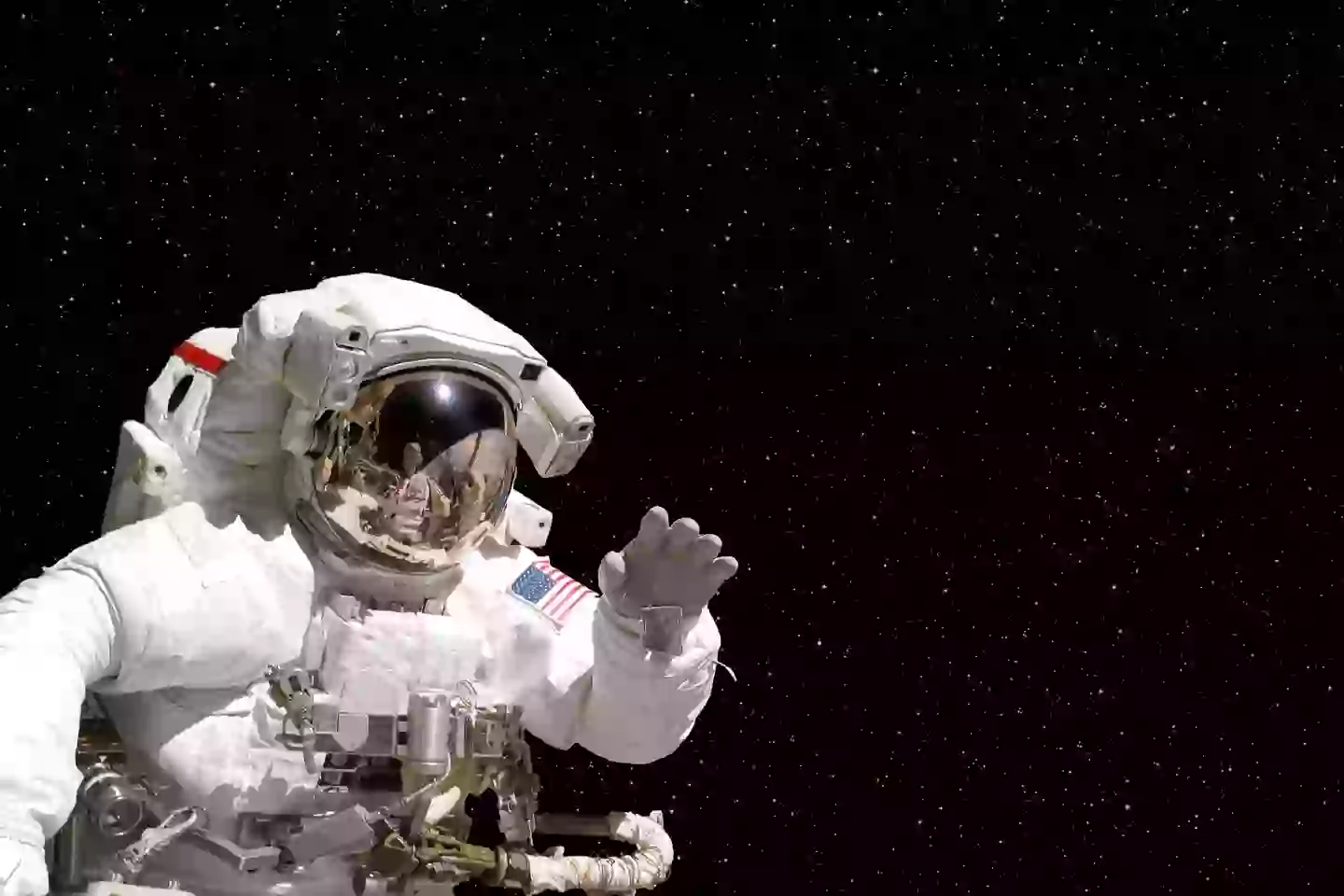
inhauscreative / Getty
Moreover, sources reportedly told Berger that NASA’s Science Mission Directorate (SMD) could soon face an existential threat.
“If this is implemented, it would be nothing short of an extinction-level event for space science and exploration in the United States,” Planetary Society chief of space policy Casey Dreier told Ars Technica.
“Losing this much money, this fast, has no precedence in NASA’s history.”
He warned such a drastic funding cut would ‘force terrible decisions, including turning off scores of active, productive, irreplaceable missions, halting nearly all new mission development, and decimating the country’s space science workforce.’
NASA officials haven’t yet confirmed the reports, but Nicola Fox, associate administrator of the SMD, responded to optimism when asked about the possible cuts during a press conference.
“We haven’t had any information yet about the budget, and I hate planning something on rumours and speculation,” Fox explained. “You know, we will continue to do great science. We’ll continue to have a balanced science portfolio, for sure. And you know, we’ll be grateful for what we get, and we’ll do great stuff with it.”
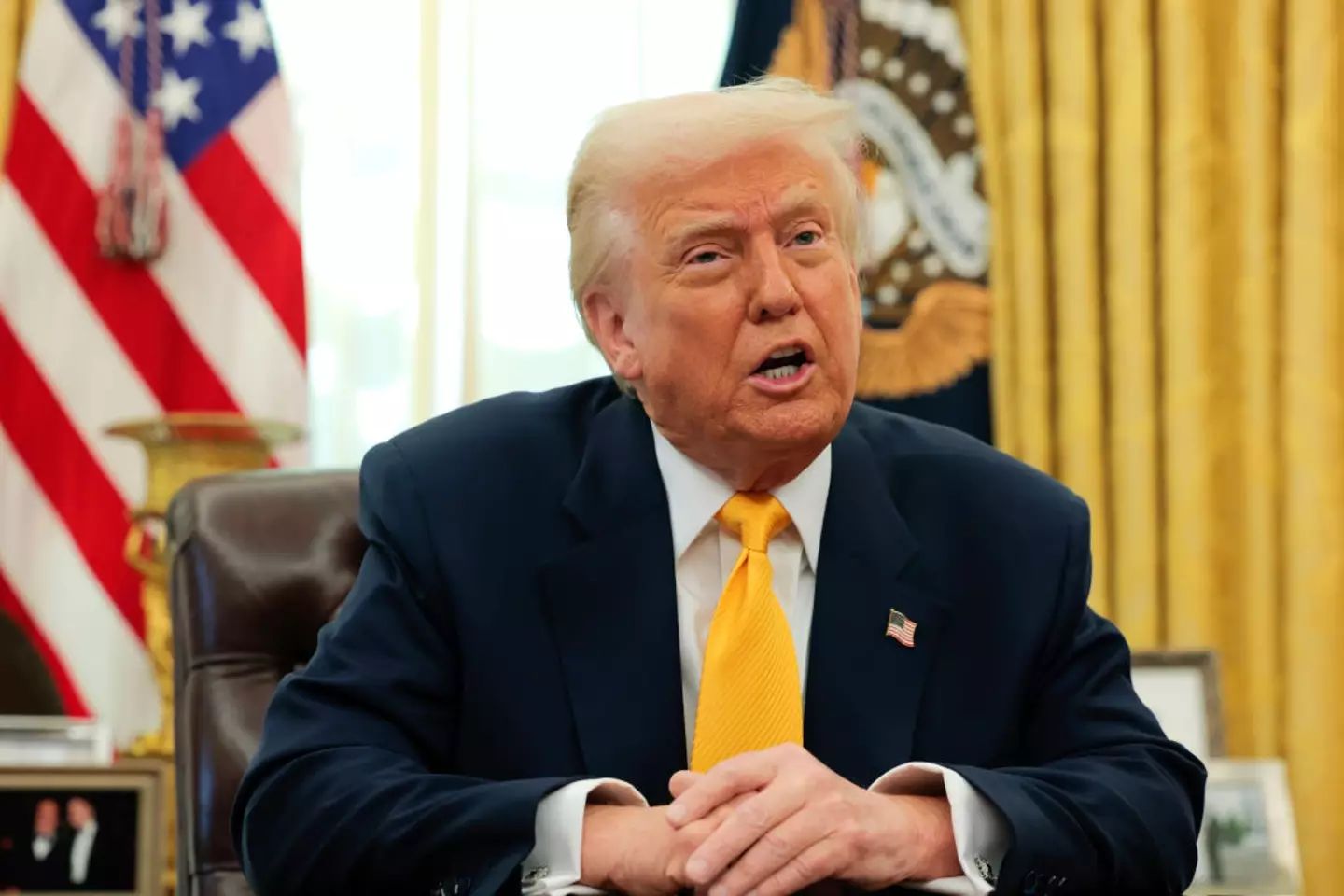

Anna Moneymaker / Staff / Getty
The SMD makes up roughly a third of NASA’s overall budget and has been behind some of its biggest achievements, including deep space missions to Pluto, asteroid sample return missions and discoveries from the James Webb Space Telescope.
However, losing half of its budget could bring science spending down to levels not seen since the early 1980s, as per Dreier’s analysis.
As a result, experts fear nations like China could take the lead in space exploration and leave the US trailing behind.
But, at this stage, the 50% budget cut is just a proposal, not a final decision. Congress will still need to negotiate funding, meanwhile, the Trump administration’s official budget request is expected in the coming weeks.
